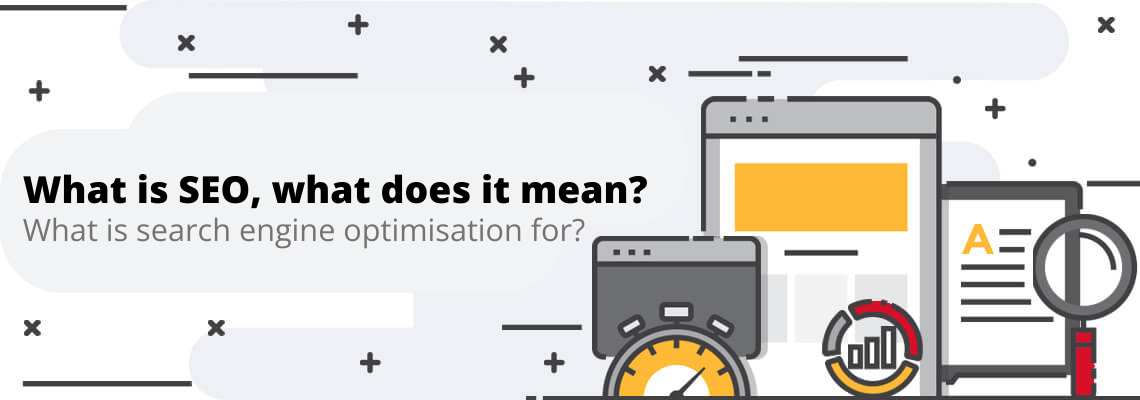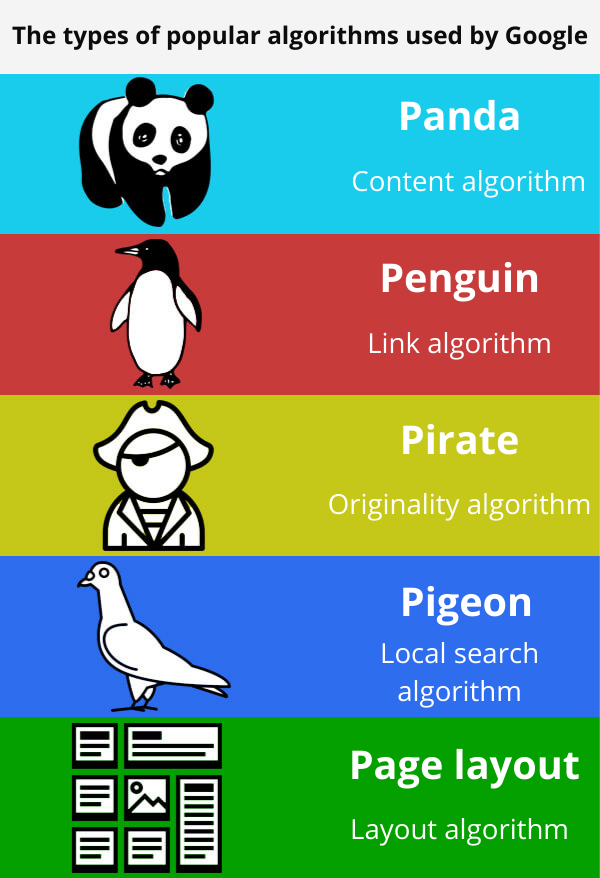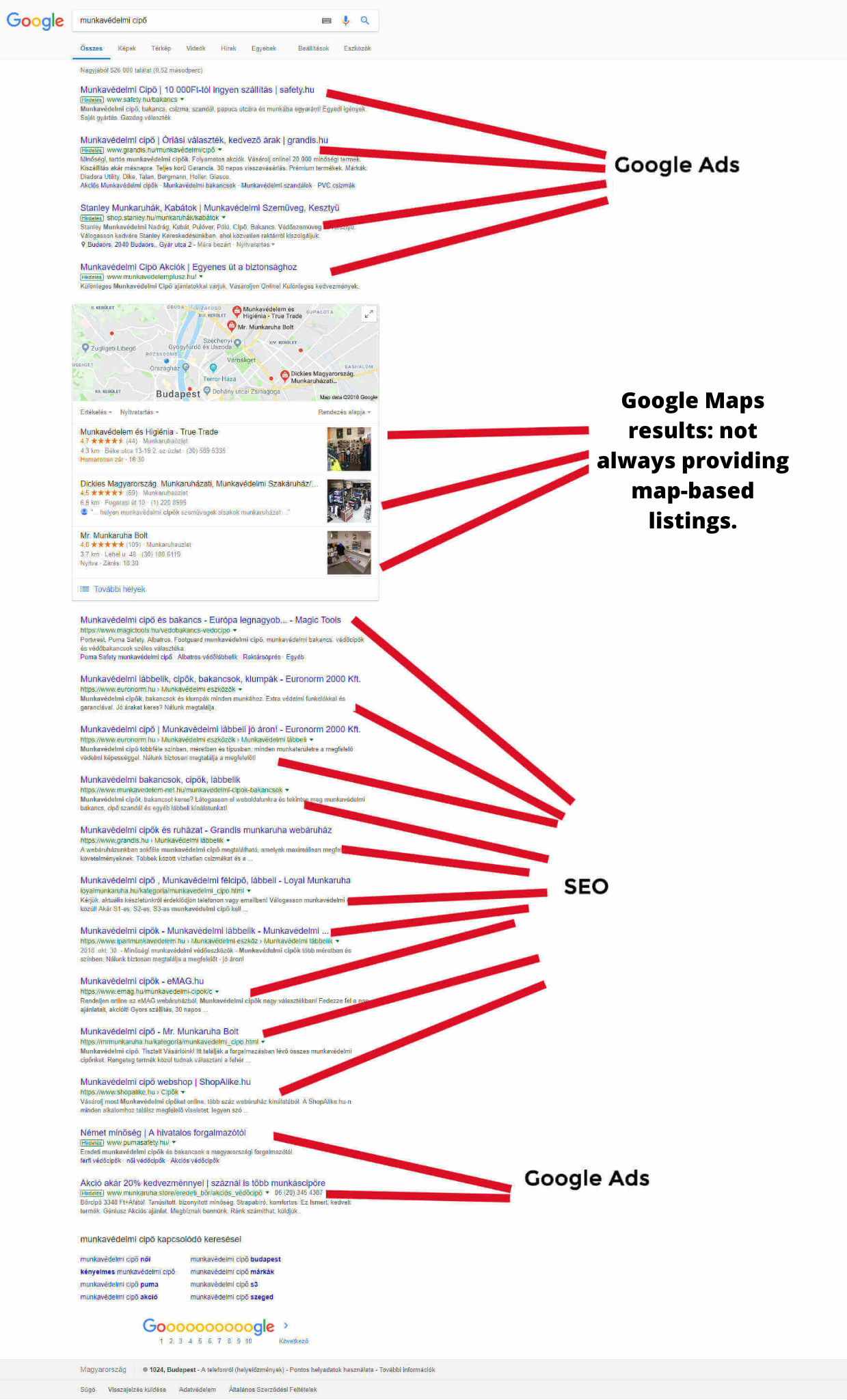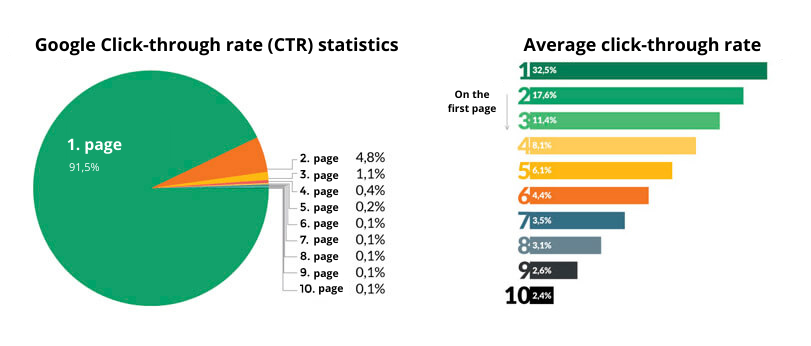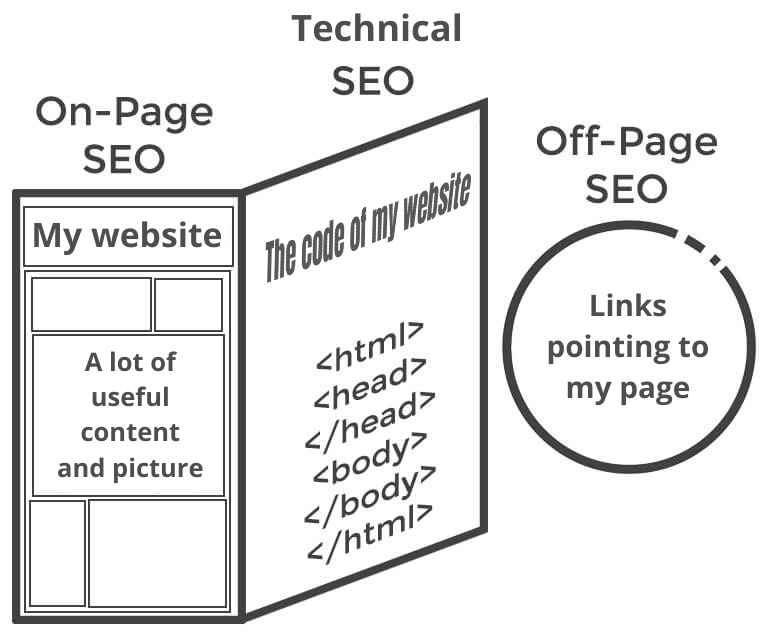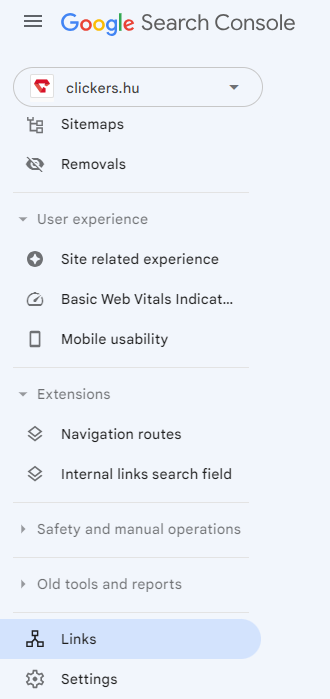Understanding Search Engine Optimization
As an entrepreneur, you have to overcome thousands of obstacles to acquire customers and generate revenue. If your business has any online presence, this article almost certainly applies to you.
SEO is an abbreviation in English, meaning Search Engine Optimization.
Have you ever wondered why some businesses rank higher while others rank lower on Google's search results?
The answer to this question lies in SEO, or search engine optimization. Various search engines like Google, Bing, or Yahoo use their own algorithms. Fortunately, Google clearly distinguishes these algorithms, as shown in the illustration. Your website needs to align with these algorithms.
When you enter a keyword or keywords into the search engine, search bots will decide which website appears at the top of the first page and which ones appear much further back. These bots rank the websites based on the keyword you entered.
It is important to differentiate that in Google’s search results, the first and last results are usually advertisements from websites that pay for their appearance. These advertised search results do not appear for every keyword but only where the website owners have paid for that specific keyword. These ads are placed through Google Ads (formerly known as Adwords).
Out of 10 people, 9 will click on the first page of Google search results when searching for a particular keyword, and 5 out of 10 will choose one of the first three results, regardless of whether it is a Google advertisement or not.
Just think about it, if we are not on the first page for the keyword related to our product or its synonyms, we could miss out on significant revenue. This applies to every online business, but especially to webshops.
If you don't appear on the first page, your chances of getting visitors drastically decrease compared to those who are present there.
So, what determines who ends up in the 1st position and who on the 6th page?
The question is precisely about the parameters the Google algorithm uses to rank websites. Knowing these parameters allows us to optimize our website so that it ranks higher in the search results. This is where the implementation of SEO comes into play. Through search engine optimization, we can achieve that for certain keywords (which we choose), our website appears higher in Google’s search results, prompting potential customers to click on our website.
The exact functioning of search bots and the nature of the parameters they consider are, of course, unknown. With this awareness, it would be very easy to manipulate how we rank higher. Fortunately, we don’t have to grope in the dark because there are many important points we know and numerous steps we can choose from to help with our SEO, search engine optimization. Among the known tricks that we know have an impact on SEO, there are more than 200. Google provides a lot of help to understand the search bot algorithm, but we can also gather information from other sources.
The main parts of search engine optimization
SEO can be fundamentally divided into three parts. One is On-page, also known as content SEO, which focuses on optimizing the content and text of our website and the occurrence rate of keywords. The next is Off-page SEO, which involves link building. The third is Technical SEO, which is more related to programming, as Google also evaluates the code quality of the website.
On-page SEO and Technical SEO are not always separated, and content search engine optimization is closely related to content marketing. The main reason for this is that Google aims to support the spread of high-quality content and well-designed websites. Therefore, alongside impeccable content, it is worth paying attention to optimizing the keywords in our images and texts as much as possible. This can be beneficial not only from an SEO perspective but also from a marketing standpoint. Additionally, it is important to keep in mind that many people view our website on mobile devices, so responsiveness (adaptation to mobile, tablet, and PC sizes) is crucial.
On-Page SEO
To rank our website well on Google, it is necessary to fill it with content. But what will make Google love your content?
Writing for the reader and not for Google! And what does the reader need? Quality content. However, when writing articles, you should always keep the following in mind:
- The primary keyword for the page
- The title of the page
- The URL of the page
- Headings and subheadings (H1, H2)
- The meta description of the page
- Image titles and alternative text (alt text)
Also, it is advisable to have substantial content, which you achieve by expanding on the topic you are writing about as much as possible.
Off-Page SEO
Off-page SEO monitors the external connections of our website. More precisely, it means what links can be found on other websites that point to our website, and how trustworthy those linking sites are.
The more credible and relevant backlinks we have from other websites, the better ranking we will achieve.
The question is, how do we know which websites are pointing to our site? Google Search Console can provide this information under the Links section.
Google Search Console is a cornerstone of search engine optimization, filled with valuable insights and opportunities. However, this deserves a separate article, and we will write about it later. 🙂
Technical SEO
Technical SEO is very complex. Google examines how fast and user-friendly the website is. Fortunately, most CMS platforms, such as WordPress, are developed to meet many of these criteria. There are numerous plugins available that help improve the loading speed of our website. The speed of our website can be influenced by several factors, with the most important ones being:
- The quality of the code
- Optimizing image size (width, height) and file size (the smaller, the better)
- Server response speed provided by the hosting service
Technical SEO can be easily checked using the Google PageSpeed Insight tool, which also provides advice on what and how to improve. If you try this program, don’t be surprised if Google gives you a lower score. There are certain UX aspects that Google evaluates strictly.
It is also important that your website is mobile-friendly. This is now a basic requirement since about half of your website visitors come from mobile devices. There is a good checking tool available for this, which you can access here:
Note:
If you feel that your website or online store needs search engine optimization, it's worth starting with a few basic steps, which you can read about in this article. However, we recommend that if you have the opportunity, entrust this task to a professional because if you are not experienced in the field, unsuccessful work can lead to wasting a lot of money and time. Let's create SEO!

We create custom complex CMS websites with a focus on marketing, SEO, and UX principles, offering the most optimal cost-value ratio.

